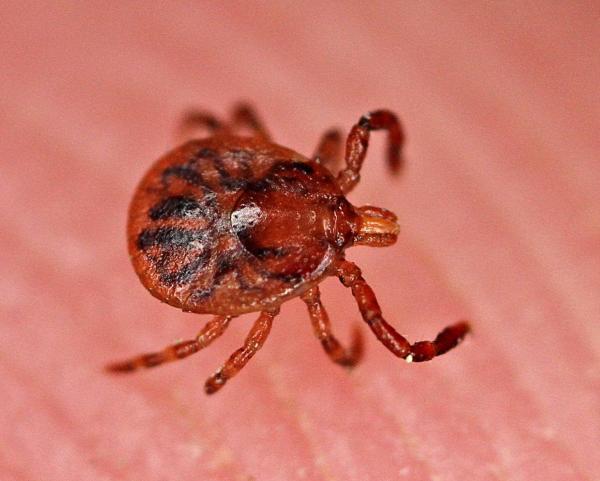There are thought to be approximately 300,000 cases of Lyme disease annually in the United States (although the actual number of cases reported to Centers for Disease Control (CDC) is approximately 30,000 per year.)
Most of them consist of fever, headache and fatigue. They are frequently identified by the characteristic skin rash that looks like a bull's eye called an erythema migrans - a telltale sign of the presence of the bacteria that cause Lyme disease, Borrelia burgdorferi.
Rarely, Lyme disease manifests as a neuroinvasive condition called Garin-Bujadoux-Bannwarth syndrome or, more frequently, just Bannwarth syndrome. This complicated version of Lyme Disease is characterized by a few telltale signs. They are, painful meningoradiculoneuritis (inflammation of one or more roots of the spinal nerve) that leads to motor weakness, facial nerve palsy and neuropathy usually in the hands and feet. The other is lymphocytic pleocytosis (an abnormally large number of lymphocytes) in the cerebrospinal fluid (CSF).
Never heard of Bannwarth syndrome? Neither had we. So, when a cluster of five cases of Bannwarth syndrome were seen during three weeks of July and August last summer, all in the upper midwest, it raised some red flags. The patients were identified at Mayo Clinic campuses in Minnesota and Wisconsin. (1)
Bannwarth syndrome associated with Lyme Disease is not a reportable disease, so data regarding the numbers of cases is scant. This cluster, however, sparked the medical professionals who treated the cases to share the information about the cluster by publishing a case report in Open Forum Infectious Diseases. This way, if there are other clusters elsewhere, people may start drawing some links and uncovering the mystery.
In the paper, they report on the five cases of Bannwarth syndrome. A small snapshot of each person follows (taken from the paper).
Patient 1: 61-year-old male with daily tick exposure presented with progressive back pain, upper torso and extremity paresthesias, right-sided facial droop, and blurry vision in the right eye. Four weeks prior, the patient observed an erythema migrans (EM) rash, treated with 5 days of twice-daily doxycycline.
Patient 2: 62-year-old female presented with subacute onset of lower extremity weakness, progressing to flaccid paralysis over a 3-week period, alongside radiating low back and abdominal pain with associated numbness.
Patient 3: 65-year-old female presented with subacute progressive ascending weakness and lower extremity paresthesias.
Patient 4: 29-year-old male developed fever, myalgias, chills, headache, fatigue, and a transient erythematous rash on his trunk in mid-June 2017. Two weeks thereafter, he developed right foot drop, Trendeleberg gait, lower extremity radiculopathy, and painful L5-S1 paresthesias.
Patient 5: 69-year-old male presented with low-grade fevers, nausea, vomiting, diffuse arthralgias, headache, loss of smell, and blurry vision in the right eye. These symptoms were accompanied by neck and right upper extremity pain in a radicular pattern.
Because it is not a reportable disease, it is not well understood how much of the disease is popping up across the country. That said, five cases in the same few weeks seemed strange enough for these authors to report it. Is Bannwarth syndrome more prevalent than previously thought? Or, is there something going on in the midwest that could be leading to more Bannwarth syndrome? Now that it is on people's radar, perhaps we will find out more answers to this strange occurrence.
Notes: (1) There were actually six patients identified with Lyme neuroborreliosis (LNB)
Source: Aditya Shah An Unusual Cluster of Neuroinvasive Lyme Disease Cases Presenting With Bannwarth Syndrome in the Midwest United States. Open Forum Infectious Diseases, Volume 5, Issue 1, 1 January 2018 ofx276,https://doi.org/10.1093/ofid/ofx276




